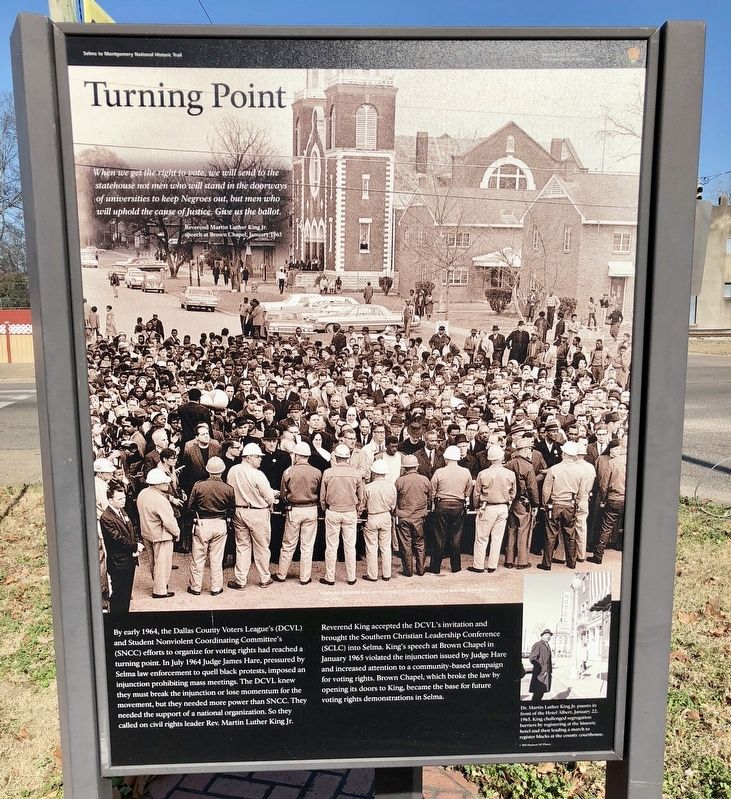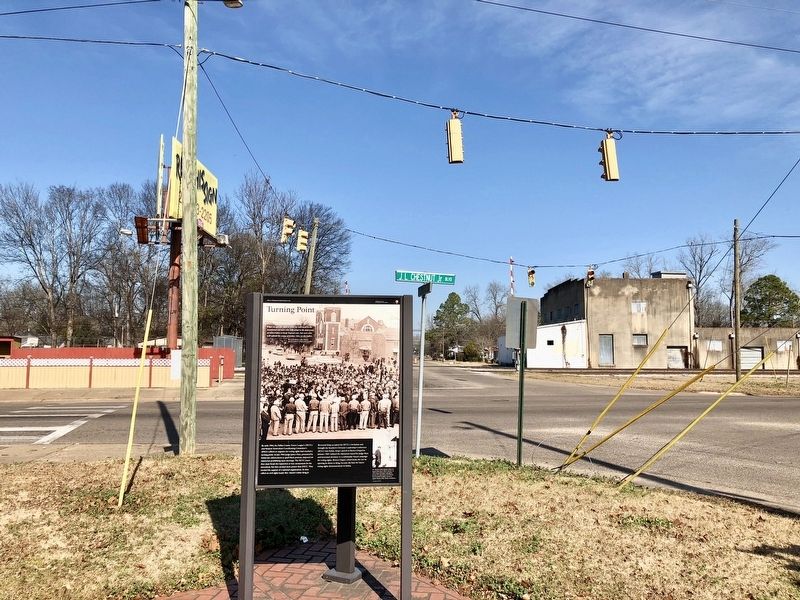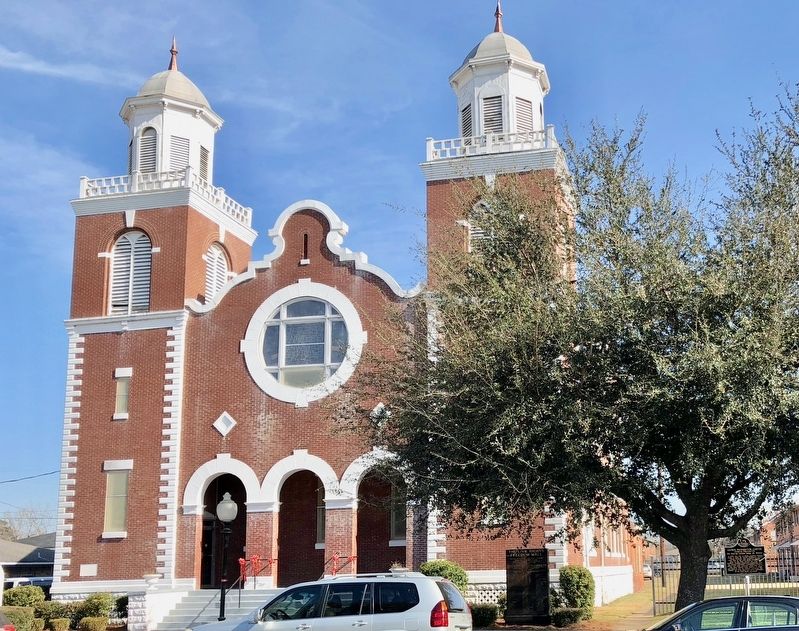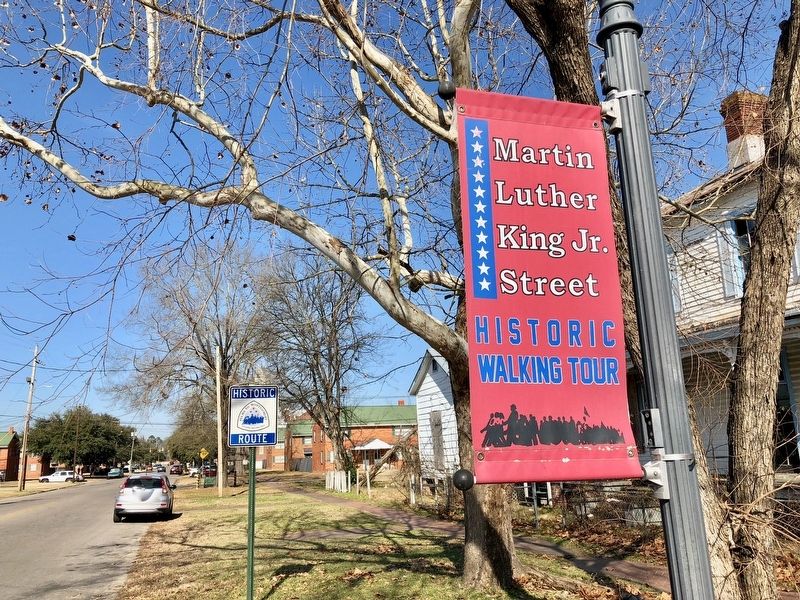Selma in Dallas County, Alabama — The American South (East South Central)
Turning Point
— Selma to Montgomery National Historic Trail —
By early 1964, the Dallas County Voters League (DCVL) and Student Nonviolent Coordinating Committee's (SNCC) efforts to organize for voting rights had reached a turning point. In July 1964 Judge James Hare, pressured by Selma law enforcement to quell black protests, imposed an injunction prohibiting mass meetings. The DCVL knew they must break the injunction or lose momentum for the movement, but they needed more power than SNCC. They needed the support of a national organization. So they called on civil rights leader Rev. Martin Luther King Jr.
Reverend King accepted the DCVL's invitation and brought the Southern Christian Leadership Conference (SCLC) into Selma. King's speech at Brown Chapel in January 1965 violated the injunction issued by Judge Hare and increased attention to a community-based campaign for voting rights. Brown Chapel, which broke the law by opening its doors to King, became the base for future voting rights demonstrations in Selma.
When we get the right to vote, we will send to the statehouse not men who will stand in the doorways of universities to keep Negroes out, but men who will uphold the cause of Justice. Give us the ballot. Reverend Martin Luther King Jr. speech at Brown Chapel, January 1965
Alabama deputies line up to contain crowds of protesters outside Brown Chapel.
Dr. Martin Luther King Jr. pauses in front of the Hotel Albert, January 22, 1965. King challenged segregation barriers by registering at the historic hotel and then leading a march to register blacks at the county courthouse.
Erected 2015 by National Park Service, U.S. Department of the Interior.
Topics. This historical marker is listed in these topic lists: African Americans • Churches & Religion • Civil Rights. A significant historical month for this entry is January 1965.
Location. 32° 24.885′ N, 87° 1.076′ W. Marker is in Selma, Alabama, in Dallas County. Marker is at the intersection of Martin Luther King Jr. Street and J L Chestnut Boulevard, on the left when traveling north on Martin Luther King Jr. Street. Touch for map. Marker is at or near this postal address: 709 Martin Luther King Jr Street, Selma AL 36703, United States of America. Touch for directions.
Other nearby markers. At least 8 other markers are within walking distance of this marker. A Grassroots Movement (here, next to this marker); First Baptist Church (a few steps from this marker); George Washington Carver Neighborhood (about 400 feet away, measured in a direct line); Lewis Scott (about 600 feet away); I Had A Dream (approx. 0.2 miles away); Brown Chapel A.M.E. Church (approx. 0.2 miles away);
Sanctuary to Stage (approx. 0.2 miles away); George Washington Carver Homes Projects (approx. 0.2 miles away). Touch for a list and map of all markers in Selma.
Also see . . . Overview of the Selma to Montgomery March - NPS. (Submitted on January 7, 2018, by Mark Hilton of Montgomery, Alabama.)
Credits. This page was last revised on November 9, 2021. It was originally submitted on January 7, 2018, by Mark Hilton of Montgomery, Alabama. This page has been viewed 556 times since then and 104 times this year. Photos: 1, 2, 3, 4. submitted on January 7, 2018, by Mark Hilton of Montgomery, Alabama.



